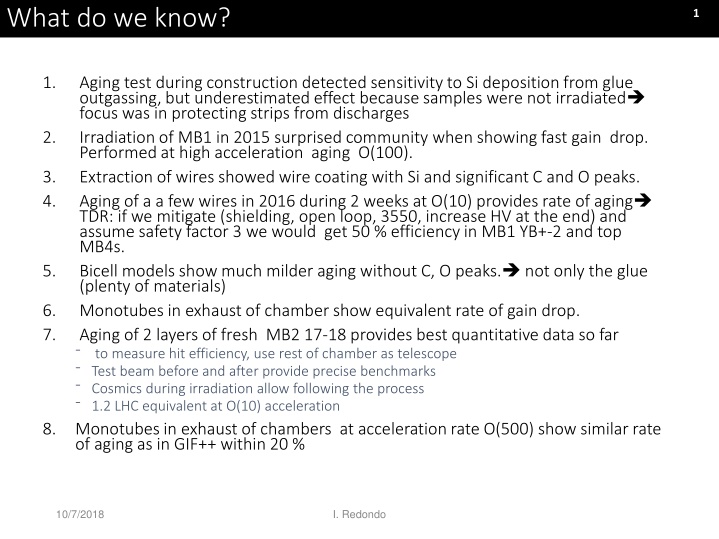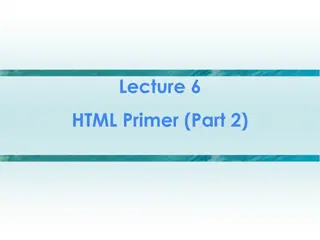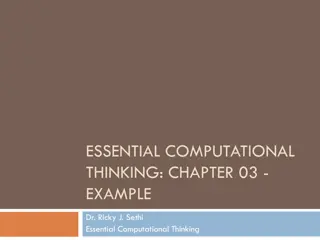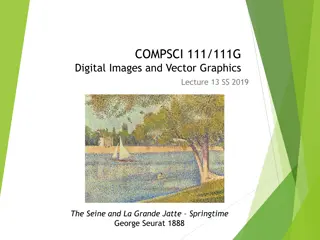
Material Aging in Particle Accelerators
Explore the impact of aging on wire coatings in particle accelerators, uncovering insights from various tests and experiments. Discover how irradiation and material composition affect efficiency and response rates, and consider potential strategies for mitigation and improvement.
Download Presentation

Please find below an Image/Link to download the presentation.
The content on the website is provided AS IS for your information and personal use only. It may not be sold, licensed, or shared on other websites without obtaining consent from the author. If you encounter any issues during the download, it is possible that the publisher has removed the file from their server.
You are allowed to download the files provided on this website for personal or commercial use, subject to the condition that they are used lawfully. All files are the property of their respective owners.
The content on the website is provided AS IS for your information and personal use only. It may not be sold, licensed, or shared on other websites without obtaining consent from the author.
E N D
Presentation Transcript
What do we know? 1 1. Aging test during construction detected sensitivity to Si deposition from glue outgassing, but underestimated effect because samples were not irradiated focus was in protecting strips from discharges Irradiation of MB1 in 2015 surprised community when showing fast gain drop. Performed at high acceleration aging O(100). Extraction of wires showed wire coating with Si and significant C and O peaks. Aging of a a few wires in 2016 during 2 weeks at O(10) provides rate of aging TDR: if we mitigate (shielding, open loop, 3550, increase HV at the end) and assume safety factor 3 we would get 50 % efficiency in MB1 YB+-2 and top MB4s. Bicell models show much milder aging without C, O peaks. not only the glue (plenty of materials) Monotubes in exhaust of chamber show equivalent rate of gain drop. Aging of 2 layers of fresh MB2 17-18 provides best quantitative data so far to measure hit efficiency, use rest of chamber as telescope Test beam before and after provide precise benchmarks Cosmics during irradiation allow following the process 1.2 LHC equivalent at O(10) acceleration Monotubes in exhaust of chambers at acceleration rate O(500) show similar rate of aging as in GIF++ within 20 % 2. 3. 4. 5. 6. 7. 8. 10/7/2018 I. Redondo
What do we need to know? 2 ? End of Irradiation Why the inefficiency drops significantly at high rate for an aged wire and not for a new one? Hit efficiency from Hit efficiency from cosmics (very preliminary analysis) (very preliminary analysis) cosmics Safety factor: 1x HL-LHC 3xHL-LHC 2xHL-LHC How does the low rate effiencieny behaves at larger safety factor? 8/9/2015 I. Redondo
Low dose irradiation Fall 2018: after last test beam? 3 8/9/2015 I. Redondo
What do we would like to know? 4 Can we use the better understanding of the aged chamber response to improve measurement of an aged wire? T0 shifts as signal amplitude drops, more complex calibration methods including non linearity of effective drift time in the cell Can we slow of revert the aging? Changing the gas mixture? Playing with the other electrodes? 10/7/2019 I. Redondo
What can we do? 5 Write down the bare results from the MB2 tests Open the MB2, extract wires and measure. Understand the DT cell response Looking at signal Looking at simulations Operate the Material aging tests and evaluate if material can be replaced. Operate the O2 test Measure efficiency Test coating removal on aged monotubes: currents (DC, pulses), aggressive gases, 8/9/2015 I. Redondo
6 Electrons drift slowly to wire Ions drift to cathode and strips. When the avalanche happens the signal is induced on the wire+capacitor and seen by the FE preamplifier Signal depends on speed, so is electron dominated Wire coating results in extra C at the input of the FE preamp 8/9/2018 I. Redondo
7 8/9/2015 I. Redondo
CMS Drift Tubes Aging Studies @ GIF++ CMS DT Chambers installed in the return barrel yoke provide Muon tracking and trigger Aim is to validate longevity of Drift Tube System at full HL_LHC exposure 8 Solenoid MB2 MB1 MB1 One of 250 chambers:2.5 m x <4 m . Ar:CO2 85:15 12 layers of rectangular drift cells CMS Muon TDR just published. https://cds.cern.ch/record/2283189/files/CMS-TDR-016.pdf DT results based on 2 weeks irradiation in 2016, roughly ~ of HL-LHC Observed and measured a significant decrease of the gain
Results from CMS_DT 2016 Irradiation 9 Gain behaviour extrapolated to full HL-LHC x3 (safety factor) Impact on system performance, muon efficiency estimated with simulation Limited because i)there are many layers (redundancy) and ii)mitigations are being implemented 15/2/2018 I. Redondo
CMS_DT 2017-18 irradtion: MB2 seen from the source 10 2017 request was a low dose rate irradiation campaign, close to HL-LHC conditions in the barrel Including muon beams before and after (i.e. first 2018 beam) to measure impact on performance Got granted 4 months, but lost 3-4 weeks irradiation mostly due to Christmas stop 8/9/2015 We invested 4 weeks early in the irradiation accelerating in dose rate (F46 F15) I. Redondo
11 8/9/2015 I. Redondo
Why low dose rate (~10 acceleration factor) ? 12 "Accelerated aging tests, often carried out with radioactive sources or X-rays to emulate the long-term lifetime properties of the detector, can be extrapolated to the real experimental conditions directly only if the aging rate depends on the total collected charge and not upon the current density, particle rate, or gas gain at which the dose was accumulated. In reality, many laboratory studies have demonstrated severe gain losses at lower charge accumulation rates, other conditions being held constant [4], [7], [20], [42], [48], [50]. The lower polymerization rate for higher current densities is attributed to the onset of space-charge effects, which reduce the electron energies in the avalanche, thus decreasing the density of ions and radicals in the avalanche plasma. Summary Summary and outlook of the international workshop and outlook of the international workshop on phenomena in gaseous detectors (DESY, Hamburg, October 2001) phenomena in gaseous detectors (DESY, Hamburg, October 2001) M. Titov ; M. Hohlmann ; C. Padilla ; N. Tesch http://ieeexplore.ieee.org/document/1043382/ on aging aging 15/2/2018 I. Redondo
2017-2018 Irradiation 13 REMUS logged from dip with high time granularity: Corrected with portable dosimeter to transport to chamber position Thursday source scans Irradiation start Test Beam MB2 GIF++ Current response to dose rate (arbitrary units) vs integrated dose (mGy)] 0.90 0.80 ( A/wire)/(mGy/h) 0.70 Amplification 0.60 0.50 0.40 Source Intensity ~0,55mGy/h Flattening of the trend 0.30 Source Intensity ~0,15mGy/h 0.20 0.10 0.00 15/02/2018 0 I. Redondo 500 100 200 300 400 600 700 800 900 1000 Integrated does [mGy]
How the CMS DT irradiation data looks like? 14 We are aging 2/12 layers @ HV 3550 Till the end of February we will have operated for 7+7 weeks (<4 months) We estimate we will reach an irradiation equivalent to ~HL-LHC (no safety factor) During the weekly source stop we measure hit efficiency as a function of HV in those 2 layers Triggering on cosmics with the rest of the chamber, which is not aged <Angle> similar to muons crossing chambers with highest aging risk in P5 (YB+-2 MB1) 3550 (P5 working point) since 1 Nov 2017 Observe a moderate decrease of the hit efficiency @ P5 HV working point for an integration equivalent to HL-LHC (no safety factor) Trend flattening last weeks Request Request more more time time at low dose rate rate to to map the extrapolation at map the extrapolation at high high luminosity and have some luminosity and have some safety factor. safety factor. ? End of Irradiation at low dose Hit efficiency from Hit efficiency from cosmics (very preliminary analysis) (very preliminary analysis) cosmics 15/2/2018 I. Redondo Safety factor: 1x HL-LHC 3xHL-LHC 2xHL-LHC
Participate in first test beam 2018 15 8/9/2015 I. Redondo





